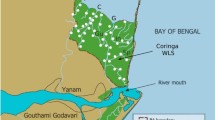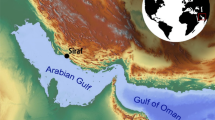Abstract
Domestic cats are one of the most widespread predators on islands worldwide and are responsible for numerous reductions and extinctions of species on islands. The three main islands of the Hyères Archipelago house one of the largest colonies of the Mediterranean endemic Yelkouan shearwater Puffinus yelkouan that has recently been up-listed by the IUCN to ‘vulnerable’. The main objectives of this study were to assess the diet of cats and to study the effect of cat predation on Yelkouan shearwater populations at the archipelago scale. The diet of cats was studied using scat analyses according to years and seasons for each island. Simultaneously, Yelkouan shearwater breeding success was monitored during a period of 8 years on Port-Cros and Porquerolles, and 3 years on Le Levant. Descriptive analyses and GLM were used to compare data gathered on each island. At the archipelago scale, cats preyed strongly upon introduced mammals and shearwaters. Surprisingly, large differences appeared in cats’ diet according to the island considered. The Yelkouan shearwater was the primary prey of cats on Le Levant, but secondary on Port-Cros and Porquerolles. Cat predation was mainly concentrated during the shearwater prospecting period, when birds arrive at the colonies and look for a mate (if they are not already paired) and a burrow before breeding. Consequently cat impact was low on shearwater breeding success. However, this study demonstrates that the cat management conducted on Port-Cros was positive for fledging success. The successful cat eradication on Port-Cros supports the need to continue working for Yelkouan shearwater conservation with Le Levant as a priority, because this is where the colonies are largest and predation on Yelkouan shearwaters is very high.






Similar content being viewed by others
References
Bergstrom DM, Lucieer A, Kiefer K et al (2009) Indirect effects of invasive species removal devastate World Heritage Island. J Appl Ecol 46:73–81. doi:10.1111/j.1365-2664.2008.01601.x
Bester MN, Bloomer JP, Van Aarde RJ et al (2002) A review of the successful eradication of feral cats from sub-Antarctic Marion Island, Southern Indian Ocean. S Afr J Wildl Res 32:65–73
Blackburn TM, Cassey P, Duncan RP et al (2008) Threats to avifauna on oceanic islands revisited. Conserv Biol 22:492–494. doi:10.1111/j.1523-1739.2008.00891.x (discussion 495–7)
Bonnaud E, Bourgeois K, Vidal E et al (2007) Feeding ecology of a feral cat population on a small mediterranean island. J Mammal 88:1074–1081
Bonnaud E, Bourgeois K, Vidal E et al (2009) How can the Yelkouan shearwater survive feral cat predation? A meta-population structure as a solution? Popul Ecol 51:261–270. doi:10.1007/s10144-008-0134-0
Bonnaud E, Zarzoso-Lacoste D, Bourgeois K et al (2010) Top-predator control on islands boosts endemic prey but not mesopredator. Anim Conserv 13:556–567. doi:10.1111/j.1469-1795.2010.00376.x
Bonnaud E, Medina FM, Vidal E et al (2011) The diet of feral cats on islands: a review and a call for more studies. Biol Invasions 13:581–603. doi:10.1007/s10530-010-9851-3
Bonnaud E, Berger G, Bourgeois K et al (2012) Predation by cats could lead to the extinction of the Mediterranean endemic Yelkouan Shearwater Puffinus yelkouan at a major breeding site. Ibis 154:566–577. doi:10.1111/j.1474-919X.2012.01228.x
Bourgeois K, Vidal E (2007) Yelkouan shearwater nest-cavity selection and breeding success. C R Biol 330:205–214. doi:10.1016/j.crvi.2006.12.007
Bourgeois K, Vidal E (2008) The endemic Mediterranean yelkouan shearwater Puffinus yelkouan: distribution, threats and a plea for more data. Oryx 42:187–194. doi:10.1017/S0030605308006467
Bourgeois K, Dromzée S, Vidal E, Legrand J (2008a) Yelkouan shearwater Puffinus yelkouan presence and behaviour at colonies: not only a moonlight question. C R Biol 331:88–97. doi:10.1016/j.crvi.2007.10.008
Bourgeois K, Vidal E, Comor V et al (2008b) Colony-site selection drives management priorities for Yelkouan Shearwater populations. J Wildl Manag 72:1188–1193. doi:10.2193/2007-052
Campbell KJ, Harper G, Algar D et al (2011) Review of feral cat eradications on islands. In: Veitch CR, Clout MN, Towns DR (eds) Island invasives: eradication and management. IUCN, Gland and CBB, Auckland, pp 37–46
Canepuccia BAD, Martinez MM, Vassallo AI (2007) Original investigation selection of waterbirds by Geoffroy’s cat: effects of prey abundance, size, and distance. Mamm Biol Zeitschrift fur Saugetierkd 72:163–173. doi:10.1016/j.mambio.2006.07.003
Chessel D, Dufour AB, Thioulouse J (2004) The ade4 package-I-One-table methods. R News 4:5–10
Cheylan G (2007) Evolution diachronique du peuplement d’oiseaux terrestres nicheurs des iles de Port-Cros et Bagaud. Conservatoire-Etudes des Ecosystèmes de Provence. Repport, 33 p
Clevenger AP (1995) Seasonality and relationships of food resource use of Martes martes, Genetta genetta and Felis catus in the Balearic Islands. Rev d’écologie 50:109–131
Courchamp F, Langlais M, Sugihara G (1999) Cats protecting birds: modelling the mesopredator release effect. J Anim Ecol 68:282–292. doi:10.1046/j.1365-2656.1999.00285.x
Courchamp F, Chapuis J-L, Pascal M (2003) Mammal invaders on islands: impact, control and control impact. Biol Rev Camb Philos Soc 78:347–383
Donlan CJ, Wilcox C (2008) Diversity, invasive species and extinctions in insular ecosystems. J Appl Ecol 45:1114–1123. doi:10.1111/j.1365-2664.2007.0
Dray S, Chessel D, Thioulouse J (2003) Co-inertia analysis and the linking of the ecological data tables. Ecology 84(11):3078–3089
Driscoll CA, Menotti-Raymond M, Roca AL et al (2007) The Near Eastern origin of cat domestication. Science 317:519–523. doi:10.1126/science.1139518
Faulquier L, Fontaine R, Vidal E et al (2009) Feral Cats Felis catus Threaten the Endangered Endemic Barau’ s Petrel Pterodroma baraui at Reunion Island (Western Indian Ocean). Waterbirds 1:330–336
Gaston AJ (2004) Seabirds: a natural history. Yale University Press, London
Griffith DA, Peres-Neto PR (2006) Spatial modeling in ecology: the flexibility of eigenfunction spatial analyses. Ecology 87:2603–2613. doi:10.1890/0012-9658(2006)87[2603:SMIETF]2.0.CO;2
Heo M, Gabriel KR (1997) A permutation test of association between configurations by means of the RV coefficient. Commun Stat Simul Comput 27:843–856
Hijmans RJ, van Etten J (2013) Raster: geographic data analysis and modeling. R package version 2.1-25
Hothorn T, Bretz F, Westfall P (2008) Simultaneous inference in general parametric models. Biom J 50:346–363
Hughes BJ, Martin GR, Reynolds SJ (2008) Cats and seabirds: effects of feral domestic cat Felis silvestris catus eradication on the population of sooty terns Onychoprion fuscata on Ascension Island, South Atlantic. Expedition 150:122–131
Keitt BS, Tershy BR (2003) Cat eradication significantly decreases shearwater mortality. Anim Conserv 6:307–308. doi:10.1017/S1367943003003378
Keitt BS, Wilcox C, Tershy BR et al (2002) The effect of feral cats on the population viability of black-vented shearwaters (Puffinus opisthomelas) on Natividad Island, Mexico. Anim Conserv 5:217–223. doi:10.1017/S1367943002002263
Kier G, Kreft H, Lee TM et al (2009) A global assessment of endemism and species richness across island and mainland regions. Proc Natl Acad Sci USA 106:9322–9327. doi:10.1073/pnas.0810306106
Konecny MJ (1987) Food habits and energetics of feral house cats in the Galápagos Islands food habits and energetics of feral house cats in the Galapagos Islands. Oikos 50:24–32
Le Breton JD, Sabatier R, Banco G, Bacou AM (1991) Principal component and correspondence analyses with respect to instrumental variables: an overview of their role in studies of structure-activity and species–environment relationships. In: Devillers J, Karcher W (eds) Applied multivariate analysis in SAR and environmental studies. Kluwer, Dordrecht, pp 85–114
Le Corre M (2008) Cats, rats and seabirds. Nature 451:134–135
Legendre P, Oksanen J, ter Braak CJF (2011) Testing the significance of canonical axes in redundancy analysis. Methods Ecol Evol 2:269–277
Long JL (2003) Mammals of the world. Their history, distribution and influence. CABI Publishing, Wallingford
Martínez-Gómez JE, Jacobsen JK (2004) The conservation status of Townsend’s shearwater Puffinus auricularis auricularis. Biol Conserv 116:35–47. doi:10.1016/S0006-3207(03)00171-X
Medina FM, Bonnaud E, Vidal E et al (2011) A global review of the impacts of invasive cats on island endangered vertebrates. Glob Chang Biol 17:3503–3510. doi:10.1111/j.1365-2486.2011.02464.x
Nogales M, Medina FM (2009) Trophic ecology of feral cats (Felis silvestris f. catus) in the main environments of an oceanic archipelago (Canary Islands): an updated approach. Mamm Biol Zeitschrift fur Saugetierkd 74:169–181. doi:10.1016/j.mambio.2008.10.002
Nogales M, Vidal E, Medina FM et al (2013) Feral cats and biodiversity conservation. Bioscience 63:804–810. doi:10.1525/bio.2013.63.10.7
Oksanen J, Blanchet F, Guillaume Kindt R, Legendre P et al (2013) vegan: community ecology package. R package version 2.0-7
Oppel S, Raine AF, Borg JJ et al (2011) Is the Yelkouan shearwater Puffinus yelkouan threatened by low adult survival probabilities? Biol Conserv 144:2255–2263. doi:10.1016/j.biocon.2011.05.017
R Core Team (2013) A language and environment for statistical computing. R Foundation for Statistical Computing
Ratcliffe N, Bell M, Pelembe T et al (2009) The eradication of feral cats from Ascension Island and its subsequent recolonization by seabirds. Oryx 44:20–29. doi:10.1017/S003060530999069X
Rayner MJ, Hauber ME, Imber MJ et al (2007) Spatial heterogeneity of mesopredator release within an oceanic island system. Proc Natl Acad Sci USA 104:20862–20865. doi:10.1073/pnas.0707414105
Ricketts TH, Dinerstein E, Boucher T et al (2005) Pinpointing and preventing imminent extinctions. Proc Natl Acad Sci USA 102:18497–18501. doi:10.1073/pnas.0509060102
Ristow D (1998) The prospectors in a colony of Cory’s shearwater Calonectris diomedea. In: Association les Amis des Oiseaux, MEDMARAVIS (eds) Ecologie des Oiseaux Marins et Gestion Intégrée en Méditerranée, Editions A. Tunis, pp 70–91
Ruffino L, Bourgeois K, Vidal E et al (2008) Introduced predators and cavity-nesting seabirds: unexpected low level of interaction at breeding sites. Can J Zool 86:1068–1073. doi:10.1139/Z08-070
Russell JC, Lecomte V, Dumont Y, Le Corre M (2009) Intraguild predation and mesopredator release effect on long-lived prey. Ecol Model 220:1098–1104. doi:10.1016/j.ecolmodel.2009.01.017
Sangster G, Knox AG, Helbig AJ, Parkin DT (2002) Taxonomic recommendations for European birds. Ibis 144:153–159
Stattersfield AJ, Capper DR (2000) Threatened birds of the world. Sustain Dev 114:852. doi:10.1016/S0006-3207(02)00364-6
Ter Braak CJF (1986) Canonical correspondence analysis: a new eigenvector technique for multivariate direct gradient analysis. Ecology 67:1167–1179
Turner DC, Bateson P (2001) The domestic cat: the biology of its behavior. Can Vet J 42:720
Vitt LJ, Caldwell JP (2013) Herpetology: an introductory biology of amphibians and reptiles, 4th edn. Academic Press, London, p 776
Warham J (1990) The petrels: their ecology and breeding systems. Academic Press, London
Whittaker RJ, Fernandez-Palacios JM (2007) Island biogeography: ecology, evolution, and conservation. Recherche 2000:416
Yoccoz N, Chessel D (1988) Ordination sous contraintes de relevés d’avifaune: élimination d’effets dans un plan d’observations à deux facteurs. Compte rendu Hebd. des séances l’Académie des Sci. Paris, D III307, pp 189–194
Zavaleta ES, Hobbs RJ, Mooney HA, Zavaleta E (2001) Viewing invasive species removal in a whole-ecosystem context. Trends Ecol Evol 16:454–459
Acknowledgments
We are very grateful to the DGA of Le Levant Island and the director and managers of Port-Cros National Park for granting permission for this research and to all those from IMBE for their useful help in the field, particularly Jérôme Legrand, Gérald Berger and several Master students. The manuscript was greatly improved taking into account the comments of two anonymous referees. We also thank Alok Bang and Aldyth Nys Traductions for improving the English. Funds and support were provided by the Port-Cros National Park and the French National Research Agency (ALIENS project), the Conseil Regional PACA and a European Life project grant to LPO PACA.
Author information
Authors and Affiliations
Corresponding author
Additional information
Elsa Bonnaud and Pauline Palmas have contributed equally to this work.
Appendix
Appendix
Coinertia analysis (Dray et al. 2003) was performed between PO table and PN table for each experimental condition. The plot of correlations between PCA axes of each table and coinertia axes show the close relationships between both tables. The link is motivated by significant P value of the RV test (Heo and Gabriel 1997) written on each panel.

Rights and permissions
About this article
Cite this article
Bonnaud, E., Palmas, P., Bourgeois, K. et al. Island specificities matter: cat diet differs significantly between islands of a major breeding archipelago for a vulnerable endemic seabird. Biol Invasions 17, 2927–2941 (2015). https://doi.org/10.1007/s10530-015-0921-4
Received:
Accepted:
Published:
Issue Date:
DOI: https://doi.org/10.1007/s10530-015-0921-4




